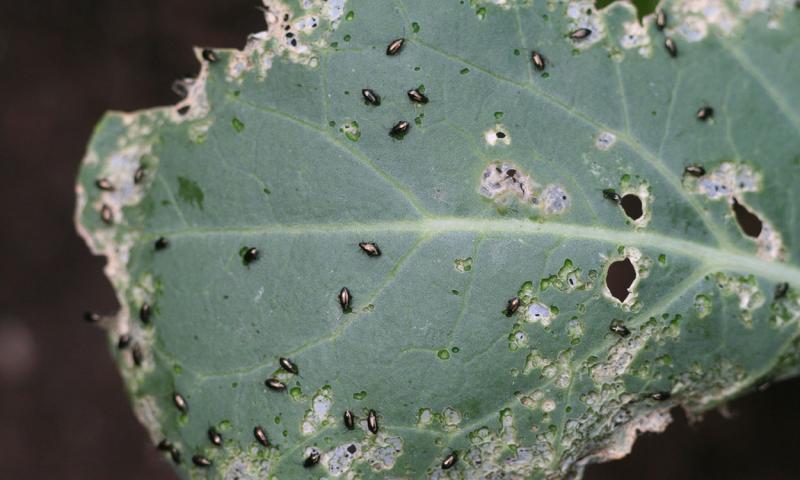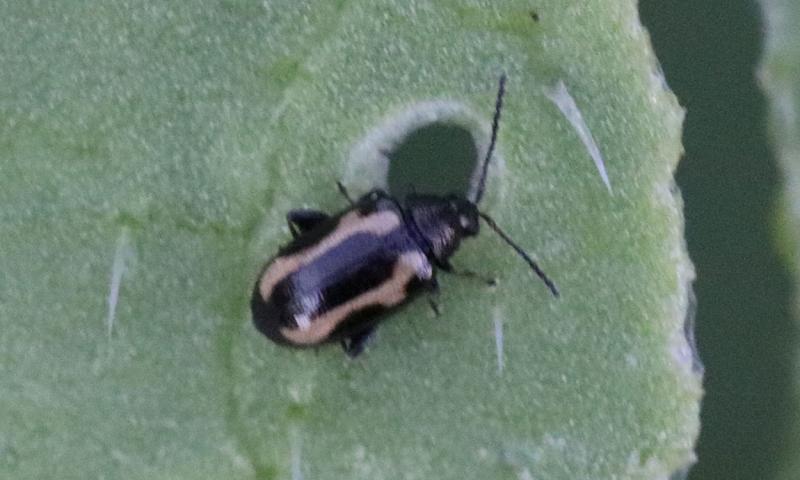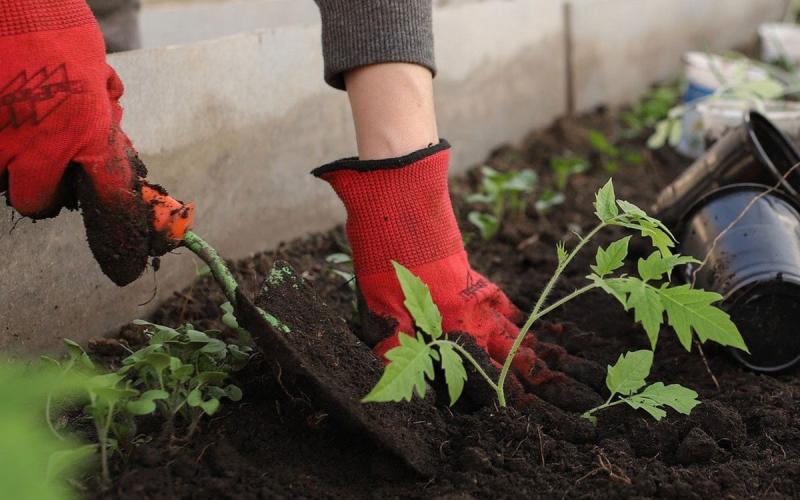
Originally Submitted: May 10, 2021
It may seem early, but flea beetles are already active in gardens in South Dakota. Cool temperatures are preventing a lot of planting, but some produce can tolerate the cold. For example, many greens (i.e., lettuce, spinach) and root vegetables (i.e., carrots, onion, beets) can tolerate cooler temperatures. Flea beetles will feed on a variety garden plants, making them a common pest for gardeners across South Dakota. The adult beetles feed on leaves and stems, and their feeding will leave behind a multitude of small, irregular holes or pits. This injury doesn’t usually kill plants, but it can cause severe stunting, especially in young plants that are less tolerant to feeding injury. Recently emerged plants need to be monitored closely, as large flea beetle populations can cause severe defoliation. As plants get closer to harvest, flea beetle feeding can also make the produce less appealing.
Identification and Life Cycle

Most flea beetle adults are less than 1/8 of an inch long, dark colored and have a shiny appearance. They get their name because they have enlarged hind legs that are used for jumping. When disturbed, the beetles will spring away, similar to the behavior of a flea. As mentioned previously, flea beetle adults cause the majority of injury to plants by causing defoliation known as “shot hole” injury. This occurs when the beetles chew numerous small holes into leaves of infested plants, making them look as if they have been hit with a shotgun blast (Figure 1).
Currently, the striped flea beetle has been seen in Brookings (Figure 2). Its appearance is similar to other flea beetles, but it also has two irregular shaped, light-yellow stripes on its hardened forewings.
Overwintering adults first become active in the spring. The adults will feed for about a month before they begin laying eggs in the soil. Larvae soon hatch and burrow down to feed on the roots of nearby plants. Root feeding at this stage is usually minimal and has little impact on plants. After another month, the larvae pupate and emerge as new adults. This cycle may continue for one or two more generations, depending on the species.
Management
Physical barriers, like floating row covers, can help protect plants from flea beetle feeding. Planting trap crops, such as radish or alyssum, can also be effective at reducing flea beetle defoliation. Trap crops draw beetles in and can then be treated with an insecticide or destroyed once they become infested. Organic products, such as neem oil and diatomaceous earth, can be applied on and around plants to work as natural repellants that keep flea beetles away or deter them from feeding. Harvest leafy produce before severe defoliation occurs.
Insecticide treatments may be necessary for severe infestations. Remember to check the label on any insecticides you choose to use to ensure that they are labeled for flea beetles and are approved for the crop that you are using them on. Furthermore, it is important to be aware of any special instructions regarding crop harvest following an insecticide application, especially pre-harvest intervals (PHI). A pre-harvest interval is the time you must wait after a pesticide application to harvest the crop.


